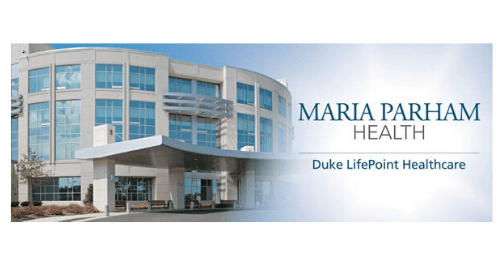Just a half hour of exercise five days a week – that’s 150 minutes total – can be just what we need to reduce the risk of an adverse health “event” and Chris Cole said we owe it to ourselves to get those heart rates up to become the best version of ourselves possible.
“We all need to be physically active. We can all do that. It’s going to lower your risk of dying early by 30 percent or more,” Cole told John C. Rose on Tuesday’s Town Talk. He said in addition to aerobic exercise, we should also adopt a resistance training program two days a week to build strength. The two activities combine to create a one-two punch against health problems.
Cole, a clinical exercise physiologist at Maria Parham Health’s rehabilitation clinic in Henderson, works with patients who already have had one of these “events” – whether heart attack, respiratory ailment or other chronic condition – get back on the road to recovery. He talked about ways to prevent health problems, reduce risk and improve quality of life.
He and the rehab team, which also includes physicians, nurses, therapists, a clinical psychologist and a nutritionist work with patients to put together a plan tailored to the individual.
Through exercise or activity counseling, he said he tries “to get an individual to adopt physical activity in a way that’s going to reduce their risk” for future health problems. “I try to get people to their best physical shape, no matter how they show up to me.”
A big chunk of his work is during Phase 2 of a 3-phase rehabilitation plan, mostly for cardiovascular patients. Phase 1 occurs while the patient is still in hospital, usually 24-48 hours after a cardiovascular surgery. Phase 2 is an out-patient program lasting 12 weeks, during which patients come in three times a week, he said. Phase 3 patients are in maintenance and are continuing the program independently, “taking lifestyle changes into their own hands.”
Others who come to the clinic have peripheral artery disease, or PAD. Unlike coronary artery disease, which is artery disease around the heart, peripheral artery disease presents as pain in the areas like the calf or buttocks and makes walking painful.
It’s a lack of oxygen to the muscle that creates the problem, and the rehab clinic’s job is to help patients increase the distance they can walk without pain.
“If we can take 100 feet and turn it into 100 yards” that people can walk pain-free, it’s a good thing. In fact, he said patients, on average, have had a 452 percent increase in their walking distance, which Cole said is substantial.
The clinic has seen a few patients with long COVID, for whom recovery has been slow and who face overall fatigue. Interestingly, those clients are below the age of 65, the opposite of the clinic’s normal clientele. Cole said those “long-haulers” have had a 100 percent return to work rate after working with the rehab clinic team.
In an effort to try to get people to be more proactive about warding off health problems, the rehab clinic began a preventative program. “We were always reacting to a problem,” Cole said, so doctors can refer a patient with certain risk factors to participate. Although insurance will not pay, the cost is $4 a day, less than some gym memberships, he noted.
The patient has access to exercise experts, the team of medical professionals and are covered by a supervising physician. This team can evaluate and make suggestions for patients to reduce their risk for major health problems. “It’s a very effective program,” Cole said.
Barriers to services, including transportation, cost and lack of insurance coverage, can also be overcome, thanks to an endowment fund that is available to help cover costs.
“If you have risk factors, don’t hesitate to talk to your doctor,” Cole said. “We’ve got things that we can do to get you here.”
To learn more, call 252.436.6395.
(This is not a paid ad. This is not medical advice.)
For complete details and audio click play.
